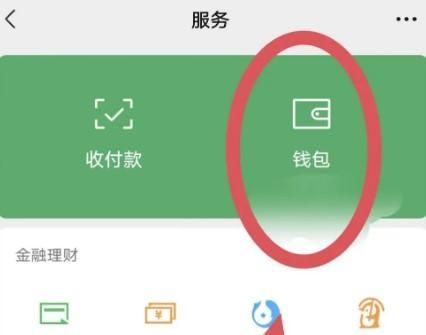微信小程序訂閱消息(java后端實(shí)現(xiàn))開(kāi)發(fā)
訂閱消息說(shuō)明
訂閱消息是微信近期新出的一個(gè)能力,用來(lái)代替原有的模板消息(原有的模板消息即將下線(xiàn))
訂閱消息的功能較模板消息有所提升,'7天'的限制取消,同時(shí)有'一次性'和'永久'訂閱.(功能上是這樣說(shuō)的,但是實(shí)際開(kāi)發(fā)時(shí)發(fā)現(xiàn)'永久'訂閱還是對(duì)小程序的服務(wù)類(lèi)目有要求的,客戶(hù)的小程序只支持'一次性'訂閱)
官方通道:小程序前端:點(diǎn)擊進(jìn)入小程序服務(wù)端:點(diǎn)擊進(jìn)入
開(kāi)發(fā)思路
用戶(hù)在小程序內(nèi)觸發(fā)按鈕或進(jìn)行支付操作時(shí)前端調(diào)用訂閱消息授權(quán)框,默認(rèn)一次授權(quán)只能發(fā)送一次訂閱消息如果用戶(hù)勾選'下次自動(dòng)授權(quán)',下次將不再?gòu)棾鍪跈?quán)框->點(diǎn)擊按鈕直接擁有一次發(fā)送訂閱消息的機(jī)會(huì),此處不需要模板消息的'formId',較之前更簡(jiǎn)單經(jīng)過(guò)測(cè)試,如果在小程序上多次點(diǎn)擊觸發(fā)授權(quán)的按鈕,發(fā)送訂閱消息的機(jī)會(huì)可以累加!!!(如,1分鐘內(nèi)點(diǎn)擊了10次按鈕,后面將擁有10次發(fā)送訂閱消息的機(jī)會(huì),什么時(shí)候發(fā)都可以)
代碼實(shí)現(xiàn)(僅java后端)
實(shí)體類(lèi)部分
1.TemplateParam.java
public class TemplateParam { private String key; private String value; public TemplateParam(String key,String value){ this.key=key; this.value=value; } public String getValue() { return value; } public void setValue(String value) { this.value = value; }public String getKey() { return key;}public void setKey(String key) { this.key = key;} }
2.Template.java
import java.util.List;public class Template { private String touser; private String template_id; private String page;private List<TemplateParam> templateParamList; public String getTouser() { return touser;}public void setTouser(String touser) { this.touser = touser;}public String getTemplate_id() { return template_id;}public void setTemplate_id(String template_id) { this.template_id = template_id;}public String getPage() { return page;}public void setPage(String page) { this.page = page;}public String toJSON() { StringBuffer buffer = new StringBuffer(); buffer.append('{'); buffer.append(String.format(''touser':'%s'', this.touser)).append(','); buffer.append(String.format(''template_id':'%s'', this.template_id)).append(','); buffer.append(String.format(''page':'%s'', this.page)).append(','); buffer.append(''data':{'); TemplateParam param = null; for (int i = 0; i < this.templateParamList.size(); i++) { param = templateParamList.get(i); // 判斷是否追加逗號(hào) if (i < this.templateParamList.size() - 1){ buffer.append(String.format(''%s': {'value':'%s'},', param.getKey(), param.getValue())); }else{ buffer.append(String.format(''%s': {'value':'%s'}', param.getKey(), param.getValue())); } } buffer.append('}'); buffer.append('}'); return buffer.toString(); } public List<TemplateParam> getTemplateParamList() { return templateParamList; } public void setTemplateParamList(List<TemplateParam> templateParamList) { this.templateParamList = templateParamList; } }
工具類(lèi)部分
1.CommonUtil.java
import java.io.BufferedReader; import java.io.InputStream; import java.io.InputStreamReader; import java.io.OutputStream; import java.io.UnsupportedEncodingException; import java.net.ConnectException; import java.net.HttpURLConnection; import java.net.URL; import javax.net.ssl.HttpsURLConnection; import javax.net.ssl.SSLContext; import javax.net.ssl.SSLSocketFactory; import javax.net.ssl.TrustManager; import net.sf.json.JSONObject; public class CommonUtil { public static JSONObject httpsRequest(String requestUrl, String requestMethod, String outputStr) { JSONObject jsonObject = null; StringBuffer buffer = new StringBuffer(); try { // 創(chuàng)建SSLContext對(duì)象,并使用我們指定的信任管理器初始化 TrustManager[] tm = { new MyX509TrustManager() }; SSLContext sslContext = SSLContext.getInstance('SSL', 'SunJSSE'); sslContext.init(null, tm, new java.security.SecureRandom()); // 從上述SSLContext對(duì)象中得到SSLSocketFactory對(duì)象 SSLSocketFactory ssf = sslContext.getSocketFactory(); URL url = new URL(requestUrl); HttpsURLConnection httpUrlConn = (HttpsURLConnection) url.openConnection(); httpUrlConn.setSSLSocketFactory(ssf); httpUrlConn.setDoOutput(true); httpUrlConn.setDoInput(true); httpUrlConn.setUseCaches(false); // 設(shè)置請(qǐng)求方式(GET/POST) httpUrlConn.setRequestMethod(requestMethod); if ('GET'.equalsIgnoreCase(requestMethod)) { httpUrlConn.connect(); } // 當(dāng)有數(shù)據(jù)需要提交時(shí) if (null != outputStr) { OutputStream outputStream = httpUrlConn.getOutputStream(); // 注意編碼格式,防止中文亂碼 outputStream.write(outputStr.getBytes('UTF-8')); outputStream.close(); } // 將返回的輸入流轉(zhuǎn)換成字符串 InputStream inputStream = httpUrlConn.getInputStream(); InputStreamReader inputStreamReader = new InputStreamReader(inputStream, 'utf-8'); BufferedReader bufferedReader = new BufferedReader(inputStreamReader); String str = null; while ((str = bufferedReader.readLine()) != null) { buffer.append(str); } bufferedReader.close(); inputStreamReader.close(); // 釋放資源 inputStream.close(); inputStream = null; httpUrlConn.disconnect(); jsonObject = JSONObject.fromObject(buffer.toString()); } catch (ConnectException ce) { ce.printStackTrace(); } catch (Exception e) { e.printStackTrace(); } return jsonObject; } public static String httpRequest(String requestUrl, String requestMethod, String outputStr) { StringBuffer buffer = new StringBuffer(); try { URL url = new URL(requestUrl); HttpURLConnection httpUrlConn = (HttpURLConnection) url.openConnection(); httpUrlConn.setDoOutput(true); httpUrlConn.setDoInput(true); httpUrlConn.setUseCaches(false); // 設(shè)置請(qǐng)求方式(GET/POST) httpUrlConn.setRequestMethod(requestMethod); if ('GET'.equalsIgnoreCase(requestMethod)) { httpUrlConn.connect(); } // 當(dāng)有數(shù)據(jù)需要提交時(shí) if (null != outputStr) { OutputStream outputStream = httpUrlConn.getOutputStream(); // 注意編碼格式,防止中文亂碼 outputStream.write(outputStr.getBytes('UTF-8')); outputStream.close(); } // 將返回的輸入流轉(zhuǎn)換成字符串 InputStream inputStream = httpUrlConn.getInputStream(); InputStreamReader inputStreamReader = new InputStreamReader(inputStream, 'utf-8'); BufferedReader bufferedReader = new BufferedReader(inputStreamReader); String str = null; while ((str = bufferedReader.readLine()) != null) { buffer.append(str); } bufferedReader.close(); inputStreamReader.close(); // 釋放資源 inputStream.close(); inputStream = null; httpUrlConn.disconnect(); //jsonObject = JSONObject.fromObject(buffer.toString()); } catch (ConnectException ce) { ce.printStackTrace(); } catch (Exception e) { e.printStackTrace(); } return buffer.toString(); } public static String urlEncodeUTF8(String source){ String result = source; try { result = java.net.URLEncoder.encode(source,'utf-8'); } catch (UnsupportedEncodingException e) { e.printStackTrace(); } return result; } public static String httpsRequestForStr(String requestUrl, String requestMethod, String outputStr) { String result=''; StringBuffer buffer = new StringBuffer(); try { // 創(chuàng)建SSLContext對(duì)象,并使用我們指定的信任管理器初始化 TrustManager[] tm = { new MyX509TrustManager() }; SSLContext sslContext = SSLContext.getInstance('SSL', 'SunJSSE'); sslContext.init(null, tm, new java.security.SecureRandom()); // 從上述SSLContext對(duì)象中得到SSLSocketFactory對(duì)象 SSLSocketFactory ssf = sslContext.getSocketFactory(); URL url = new URL(requestUrl); HttpsURLConnection httpUrlConn = (HttpsURLConnection) url.openConnection(); httpUrlConn.setSSLSocketFactory(ssf); httpUrlConn.setDoOutput(true); httpUrlConn.setDoInput(true); httpUrlConn.setUseCaches(false); // 設(shè)置請(qǐng)求方式(GET/POST) httpUrlConn.setRequestMethod(requestMethod); if ('GET'.equalsIgnoreCase(requestMethod)) { httpUrlConn.connect(); } // 當(dāng)有數(shù)據(jù)需要提交時(shí) if (null != outputStr) { OutputStream outputStream = httpUrlConn.getOutputStream(); // 注意編碼格式,防止中文亂碼 outputStream.write(outputStr.getBytes('UTF-8')); outputStream.close(); } // 將返回的輸入流轉(zhuǎn)換成字符串 InputStream inputStream = httpUrlConn.getInputStream(); InputStreamReader inputStreamReader = new InputStreamReader(inputStream, 'utf-8'); BufferedReader bufferedReader = new BufferedReader(inputStreamReader); String str = null; while ((str = bufferedReader.readLine()) != null) { buffer.append(str); } bufferedReader.close(); inputStreamReader.close(); // 釋放資源 inputStream.close(); inputStream = null; httpUrlConn.disconnect(); result=buffer.toString(); } catch (ConnectException ce) { ce.printStackTrace(); } catch (Exception e) { e.printStackTrace(); } return result; } }
2.HttpUtil.java
import java.io.IOException;import java.util.ArrayList;import java.util.List;import java.util.Map;import org.apache.http.Consts;import org.apache.http.HttpEntity;import org.apache.http.NameValuePair;import org.apache.http.client.entity.UrlEncodedFormEntity;import org.apache.http.client.methods.CloseableHttpResponse;import org.apache.http.client.methods.HttpGet;import org.apache.http.client.methods.HttpPost;import org.apache.http.impl.client.CloseableHttpClient;import org.apache.http.impl.client.HttpClients;import org.apache.http.message.BasicNameValuePair;import org.apache.http.util.EntityUtils;public class HttpUtil {private static final CloseableHttpClient httpclient = HttpClients.createDefault();/** * 發(fā)送HttpGet請(qǐng)求 * @param url * @return */public static String sendGet(String url) { HttpGet httpget = new HttpGet(url); CloseableHttpResponse response = null; try { response = httpclient.execute(httpget); } catch (IOException e1) { e1.printStackTrace(); } String result = null; try { HttpEntity entity = response.getEntity(); if (entity != null) { result = EntityUtils.toString(entity); } } catch (Exception e) { e.printStackTrace(); } finally { try { response.close(); } catch (IOException e) { e.printStackTrace(); } } return result;}/** * 發(fā)送HttpPost請(qǐng)求,參數(shù)為map * @param url * @param map * @return */public static String sendPost(String url, Map<String, String> map) { List<NameValuePair> formparams = new ArrayList<NameValuePair>(); for (Map.Entry<String, String> entry : map.entrySet()) { formparams.add(new BasicNameValuePair(entry.getKey(), entry.getValue())); } UrlEncodedFormEntity entity = new UrlEncodedFormEntity(formparams, Consts.UTF_8); HttpPost httppost = new HttpPost(url); httppost.setEntity(entity); CloseableHttpResponse response = null; try { response = httpclient.execute(httppost); } catch (IOException e) { e.printStackTrace(); } HttpEntity entity1 = response.getEntity(); String result = null; try { result = EntityUtils.toString(entity1); } catch (Exception e) { e.printStackTrace(); } return result;}/** * 發(fā)送不帶參數(shù)的HttpPost請(qǐng)求 * @param url * @return */public static String sendPost(String url) { HttpPost httppost = new HttpPost(url); CloseableHttpResponse response = null; try { response = httpclient.execute(httppost); } catch (IOException e) { e.printStackTrace(); } HttpEntity entity = response.getEntity(); String result = null; try { result = EntityUtils.toString(entity); } catch (Exception e) { e.printStackTrace(); } return result;} }
jar包:
1.fastjson-1.2.44.jar
控制層代碼:
1.獲取ACCESS_TOKEN
String url='https://api.weixin.qq.com/cgi-bin/token?grant_type=client_credential&appid=' + 小程序的appid + '&secret=' + 小程序的Secret String result = HttpUtil.sendGet(url); JSONObject object=JSON.parseObject(result); String Access_Token = object.getString('access_token');
2.發(fā)送訂閱消息
Template template=new Template(); template.setTemplate_id('填寫(xiě)小程序申請(qǐng)的訂閱消息id'); template.setTouser('用戶(hù)的openid'); template.setPage('pages/index/index'); List<TemplateParam> paras=new ArrayList<TemplateParam>(); paras.add(new TemplateParam('character_string2','000001')); paras.add(new TemplateParam('amount1','888.88')); paras.add(new TemplateParam('date3','2015年01月05日')); paras.add(new TemplateParam('thing4','請(qǐng)進(jìn)入小程序查1看')); template.setTemplateParamList(paras); String requestUrl='https://api.weixin.qq.com/cgi-bin/message/subscribe/send?access_token=ACCESS_TOKEN'; requestUrl=requestUrl.replace('ACCESS_TOKEN', Access_Token); System.out.println(template.toJSON()); net.sf.json.JSONObject jsonResult=CommonUtil.httpsRequest(requestUrl, 'POST', template.toJSON()); if(jsonResult!=null){ System.out.println(jsonResult); int errorCode=jsonResult.getInt('errcode'); String errorMessage=jsonResult.getString('errmsg'); if(errorCode==0){ System.out.println('Send Success'); }else{ System.out.println('訂閱消息發(fā)送失敗:'+errorCode+','+errorMessage); } }
總結(jié)
1.本文閱讀對(duì)象為初學(xué)者,所有各種工具類(lèi).jar包都粘出來(lái)了,直接復(fù)制即可使用2.通過(guò)該功能的開(kāi)發(fā),發(fā)現(xiàn)小程序的通知類(lèi)功能監(jiān)管更加嚴(yán)格,必須用戶(hù)授權(quán)才可以發(fā)訂閱消息,同時(shí)用戶(hù)可以更方便的取消訂閱,所以建議開(kāi)發(fā)者慎用此功能
到此這篇關(guān)于微信小程序訂閱消息(java后端實(shí)現(xiàn))開(kāi)發(fā)的文章就介紹到這了,更多相關(guān)小程序訂閱消息內(nèi)容請(qǐng)搜索好吧啦網(wǎng)以前的文章或繼續(xù)瀏覽下面的相關(guān)文章希望大家以后多多支持好吧啦網(wǎng)!
相關(guān)文章:

 網(wǎng)公網(wǎng)安備
網(wǎng)公網(wǎng)安備